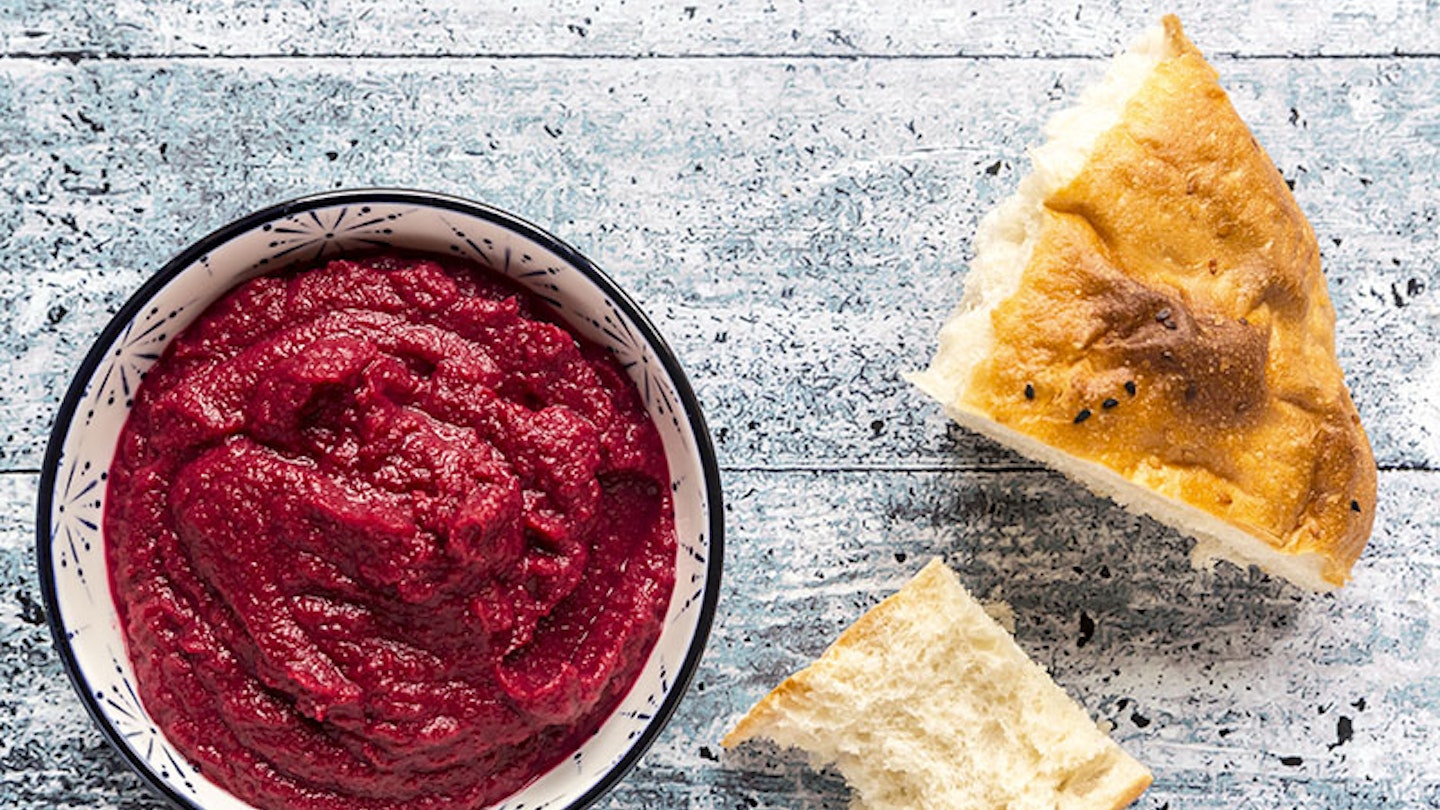Beetroot is a bright red vegetable known for its sweet taste but it is also packed with nutrients which can help boost your baby’s development.
High in fibre, iron, calcium, potassium and vitamin C, beetroot is a great food to introduce to your little one during weaning. The vegetable is also effective in improving blood circulation to the brain and other parts of the body.
This simple beetroot puree can be given as a first food from six months or you can add it to your baby’s porridge as a healthy sweetener.
Beetroot puree recipe
Peel a fresh beetroot and cut it into chunks. Make sure you don’t give your baby any beetroot skin as it can be tricky to digest.
Steam the beetroot chunks for around 10 minutes or until they are soft. If you don’t have a steamer, add your beetroot to a metal sieve or colander and place on top of a pan with boiling water at the bottom, then cover with a lid.
Add a small amount of water and blend in a food processor until it is a smooth paste. If your baby is starting to eat purees with a bit more texture, you could mash the steamed beetroot instead.
Combine with other ingredients
Once you’ve given plain beetroot to your little one and they’ve not had any negative reactions, you can try combining it with other ingredients. As it is a sweet vegetable, it works well with fruits like apples and plums or you could add potato or carrot.
Apple and beetroot puree
This apple and beetroot puree recipe is really simple to make and is popular with developing tastebuds.
Ingredients
Two apples – peeled, cored and cut into chunks
One beetroot – peeled and cut into chunks
Some of your baby’s usual milk – either breast or formula
Method
Steam the beetroot for about 15 minutes and then add the apple chunks and cook for another eight minutes.
Add the soft chunks to a food processor and blend, adding a small amount of your baby’s milk (or water if you prefer) to achieve a smooth consistency.
Any puree you won’t use straight away can be put into an ice cube tray or other small containers and frozen.
Plum and beetroot puree
Another popular combination for weaning is beetroot and plum.
Ingredients
2 beetroots, peeled and cut into 1cm chunks
2 red plums, cut in half and with their stones removed
Method
Add the beetroot and plums to a small saucepan and add just enough water to cover them.
Put the pan on a high heat until the water boils and then reduce the heat and cover the pan. Leave it simmering on a low heat for around 10 to 15 minutes until the beetroot is very soft.
Blend the beetroot and plums until they make a smooth paste.
Will it affect my baby’s nappies?
If you notice the contents of your baby’s nappies looks red after they’ve been eating beetroot, don’t be alarmed, this is totally normal.
As your little one’s digestive system is immature and still developing, lots of the food they eat will reappear in their nappies, seemingly unchanged. This can lead to some unusual coloured poo or, if you’re doing baby-led weaning, you might find some actual chunks of undigested food in there.
Popular articles to read next
The best baby food blenders and steamers for making homemade baby food
